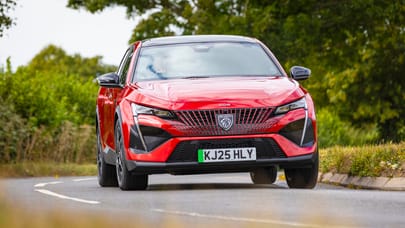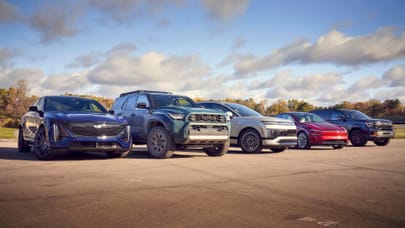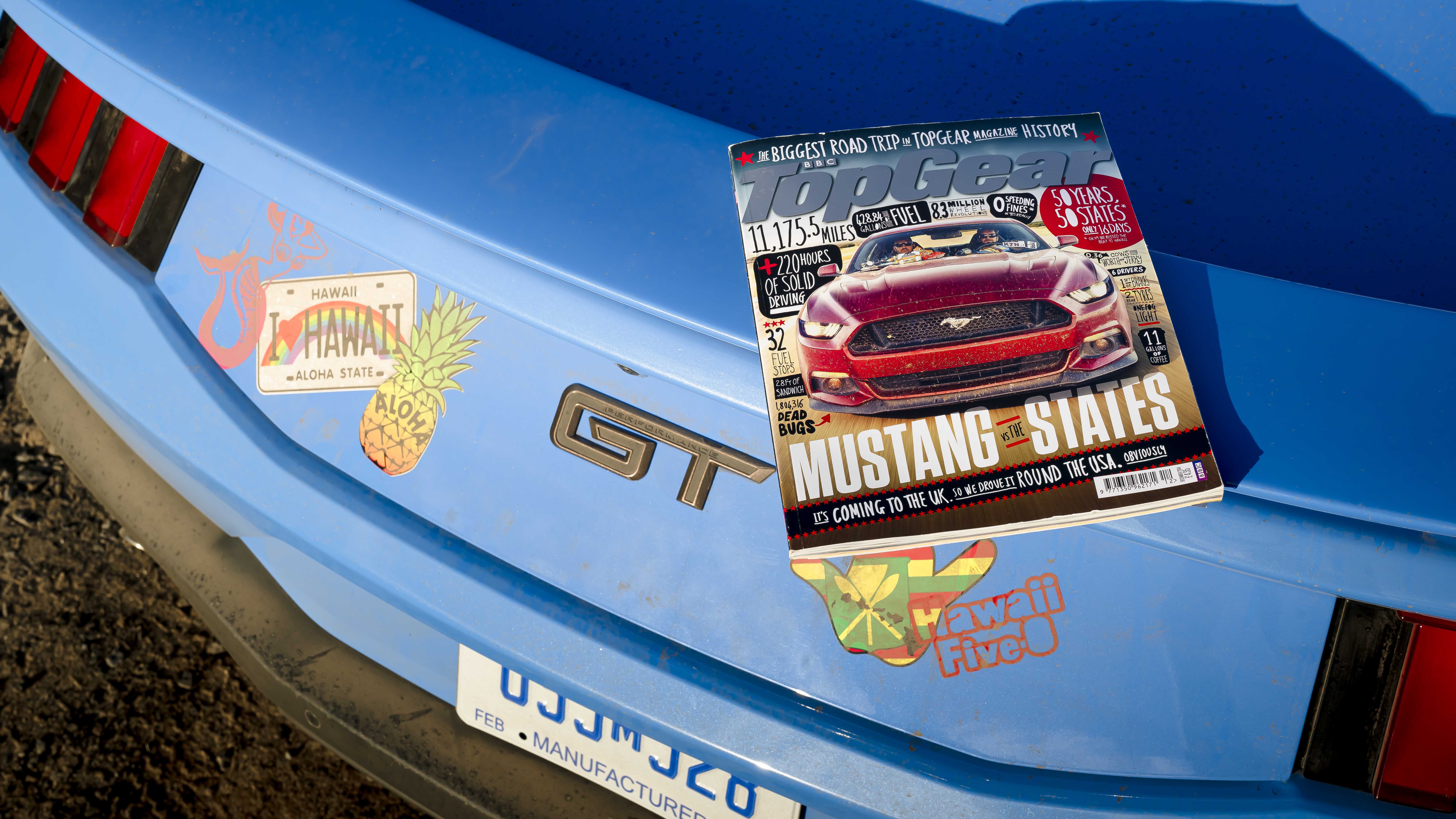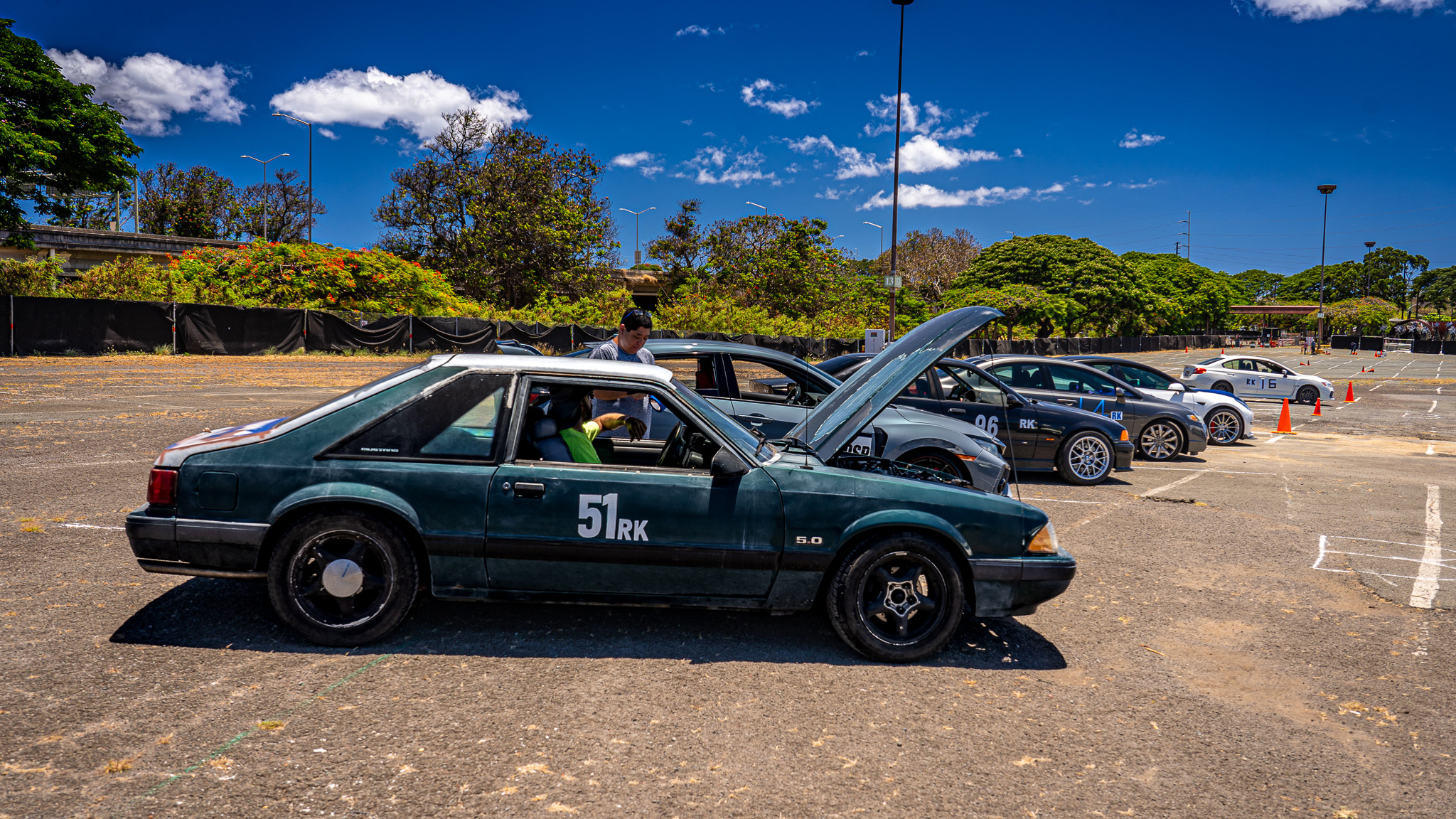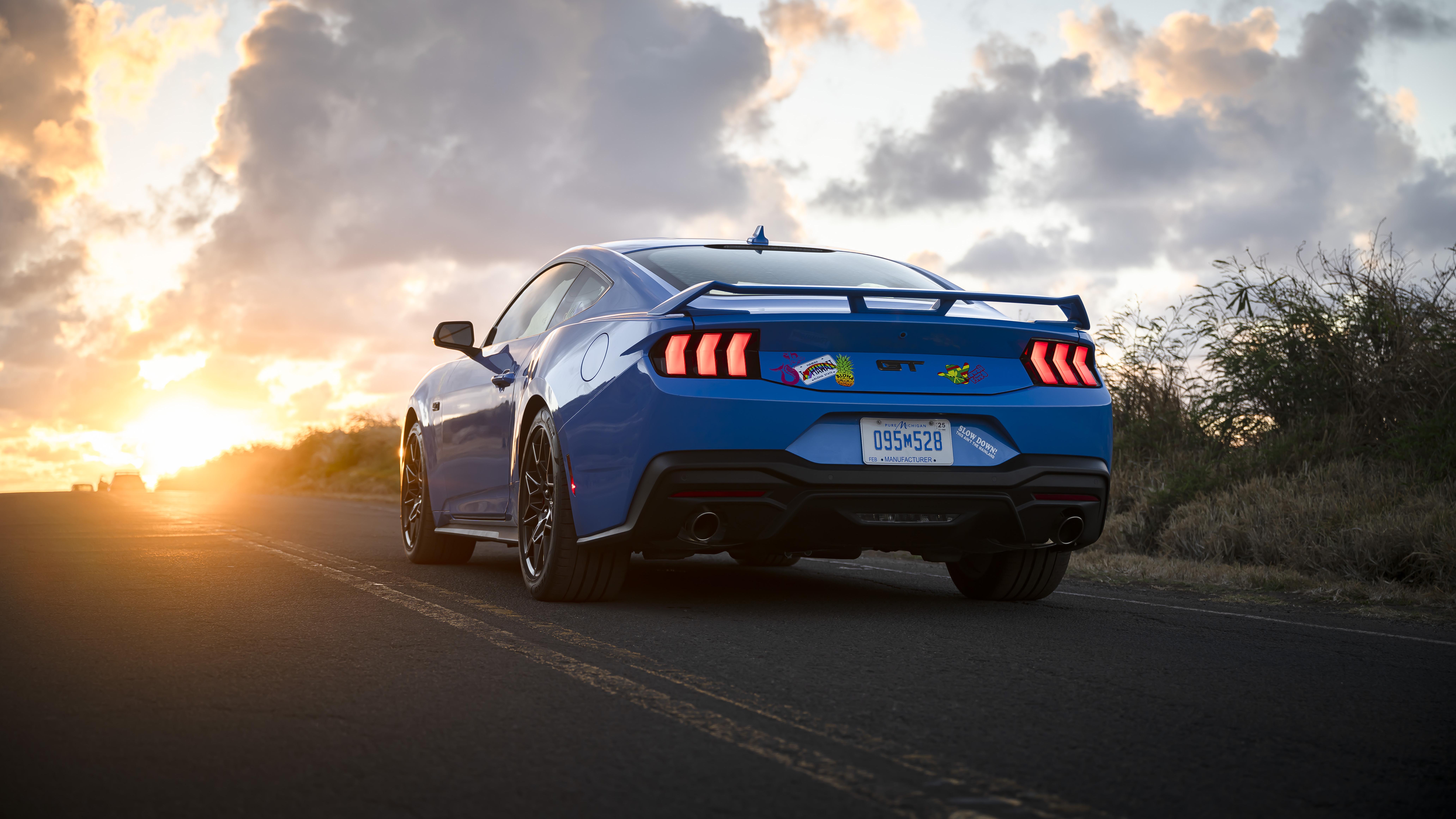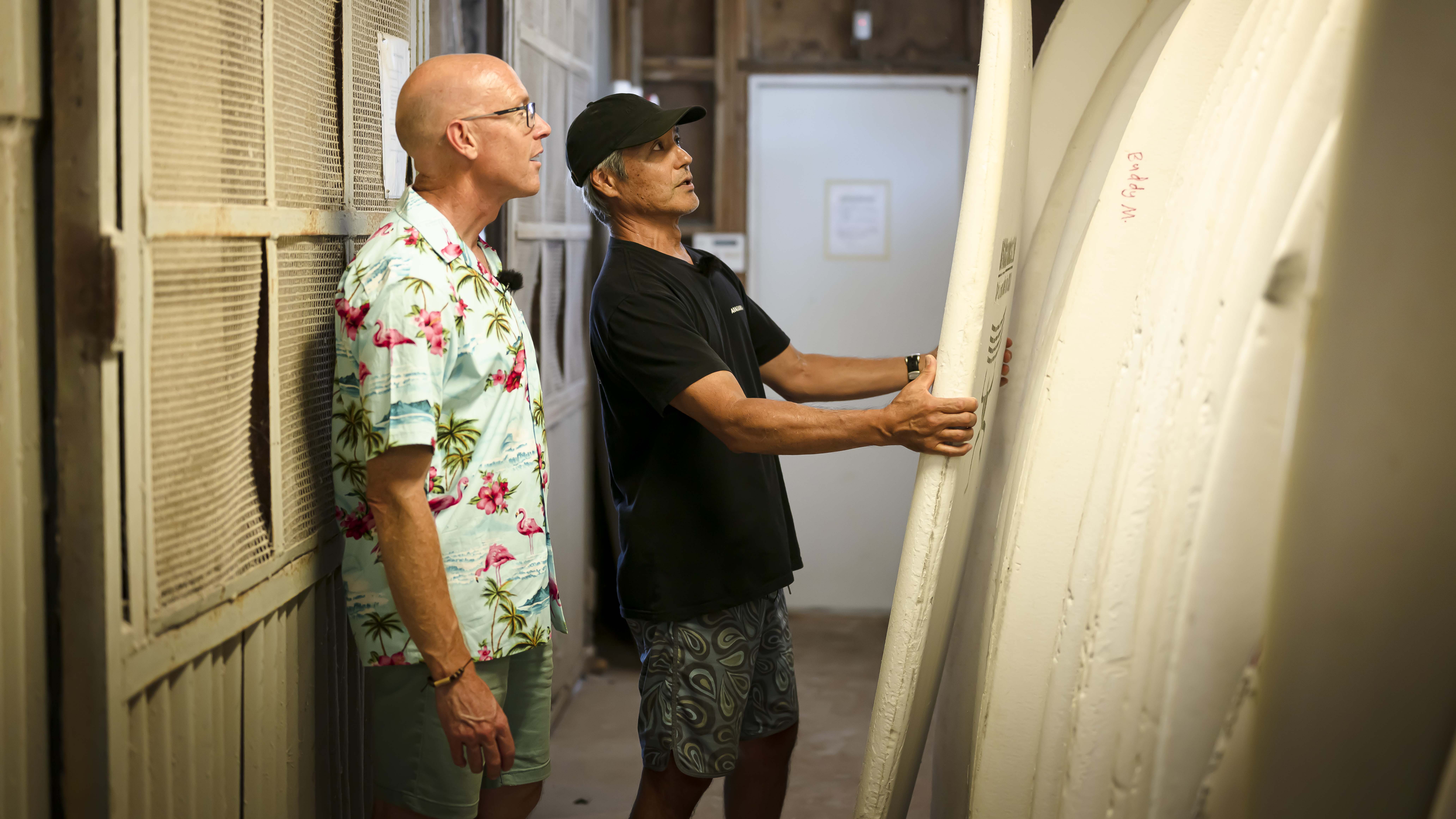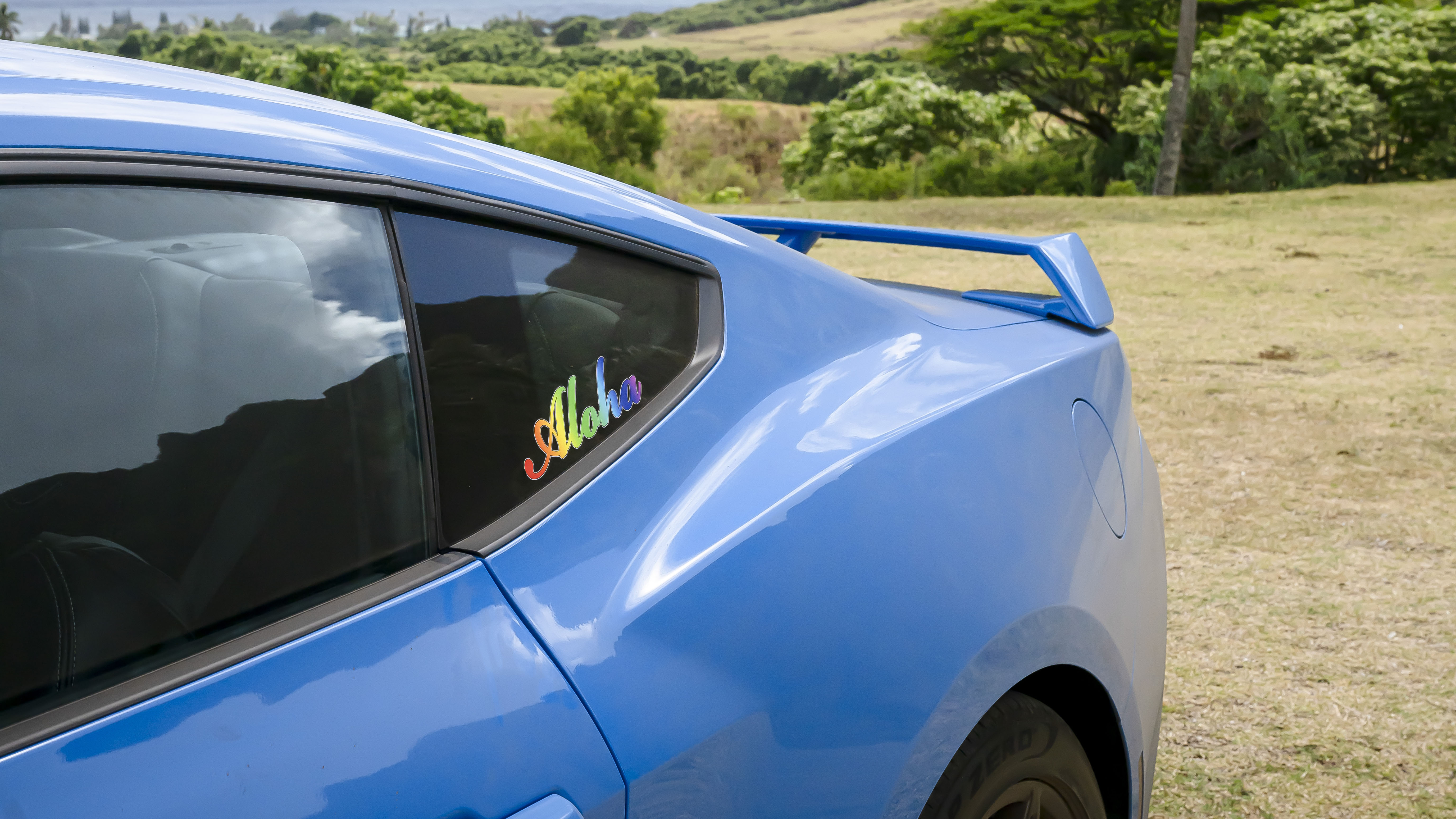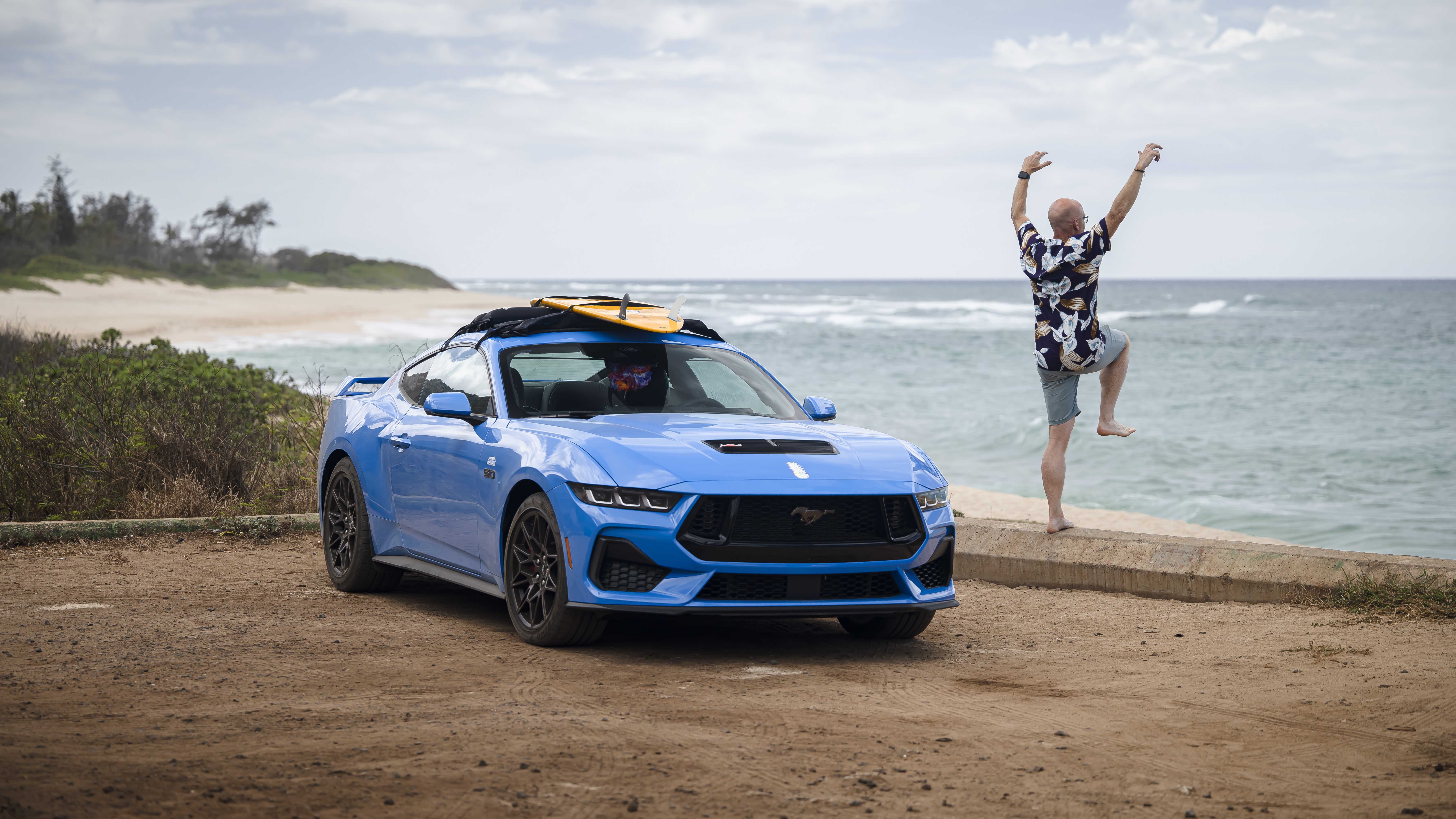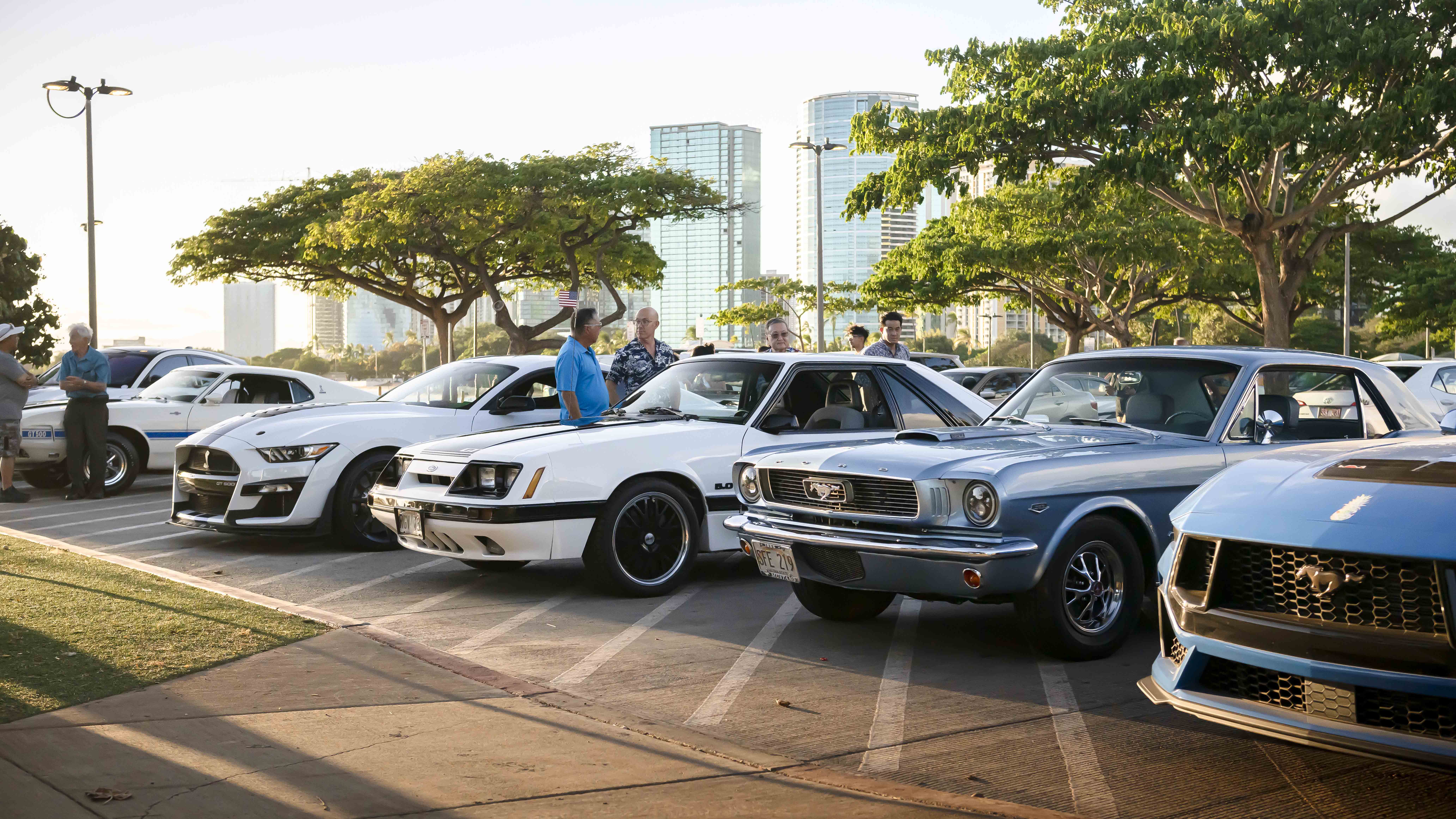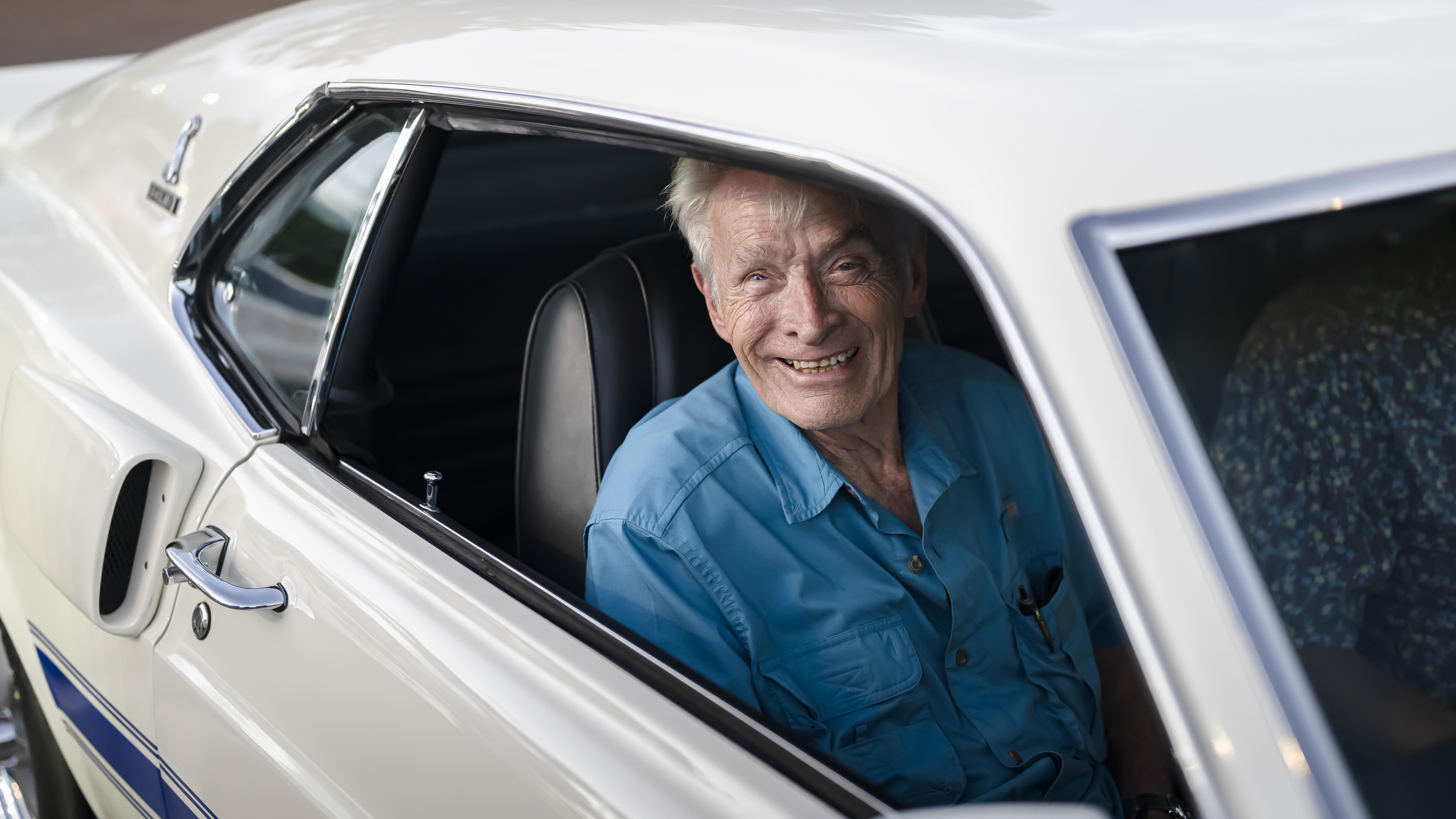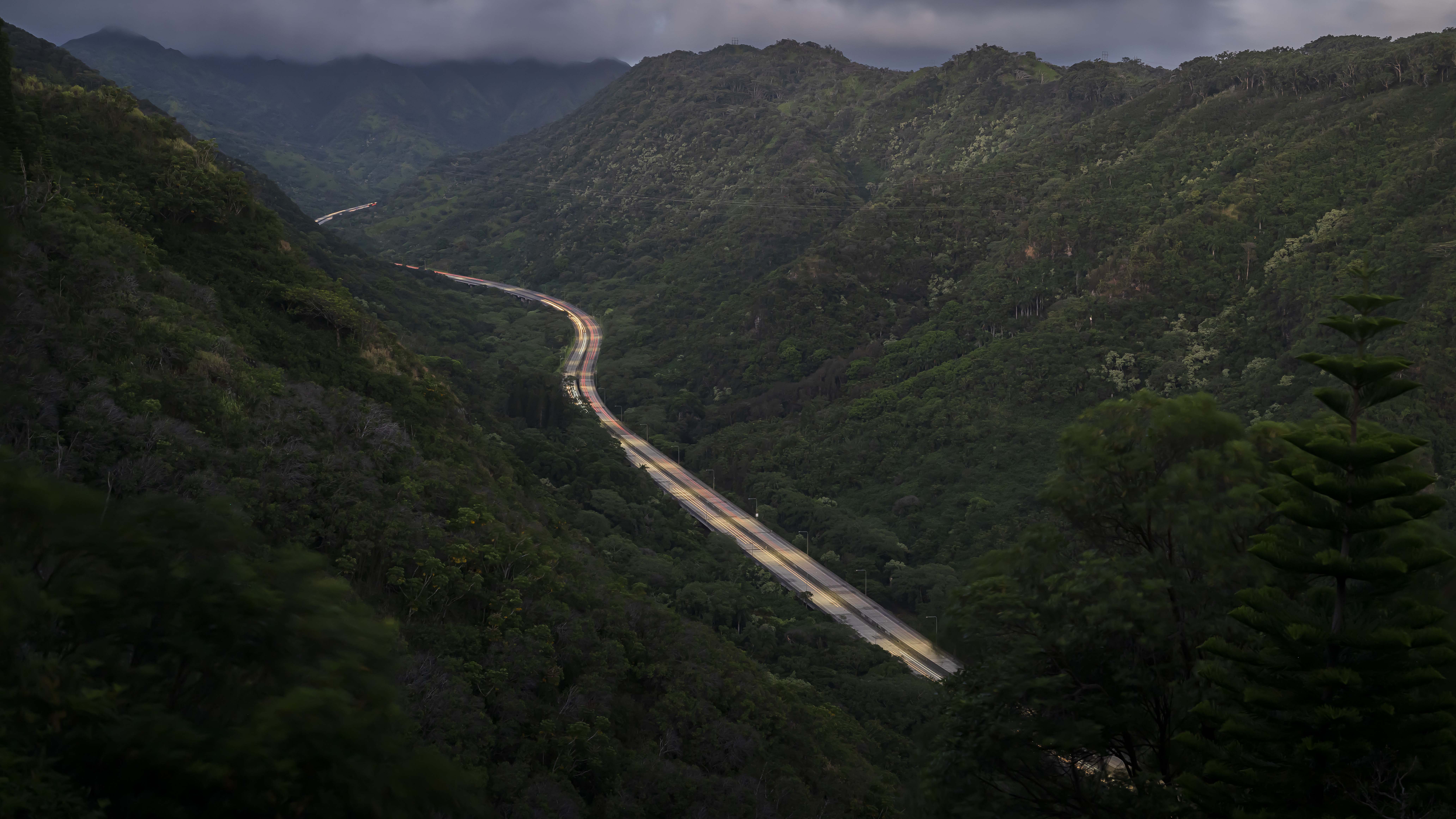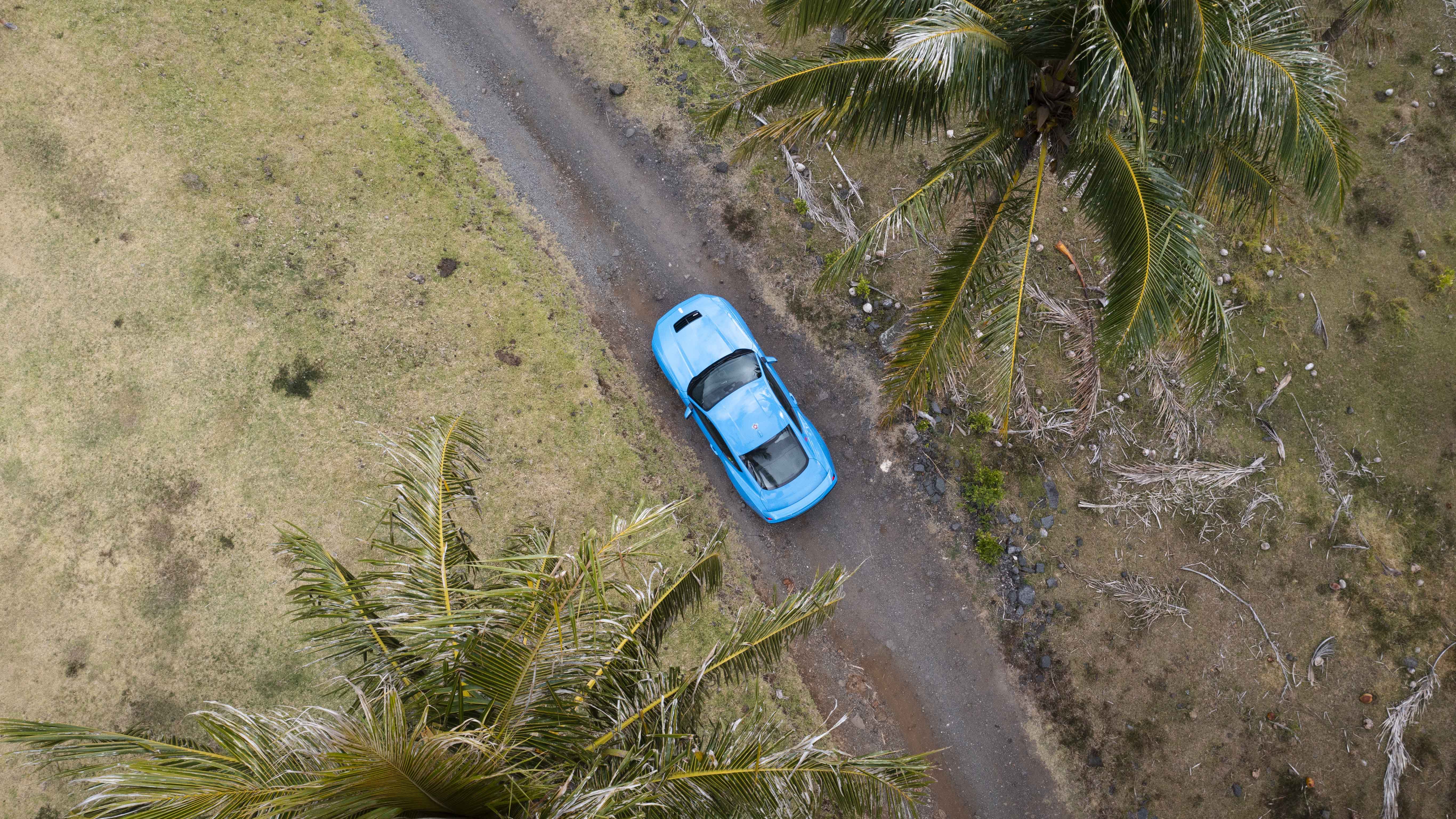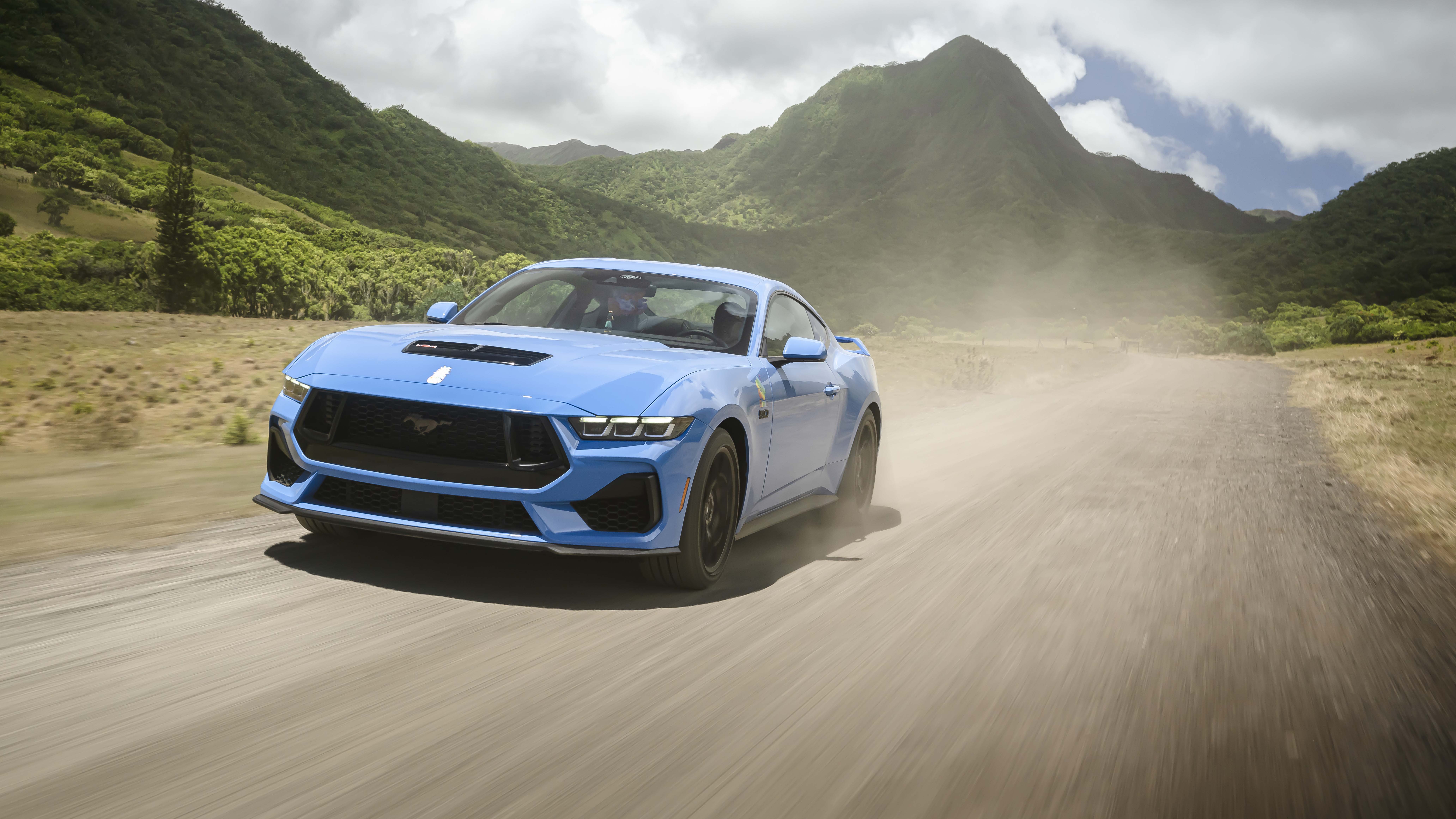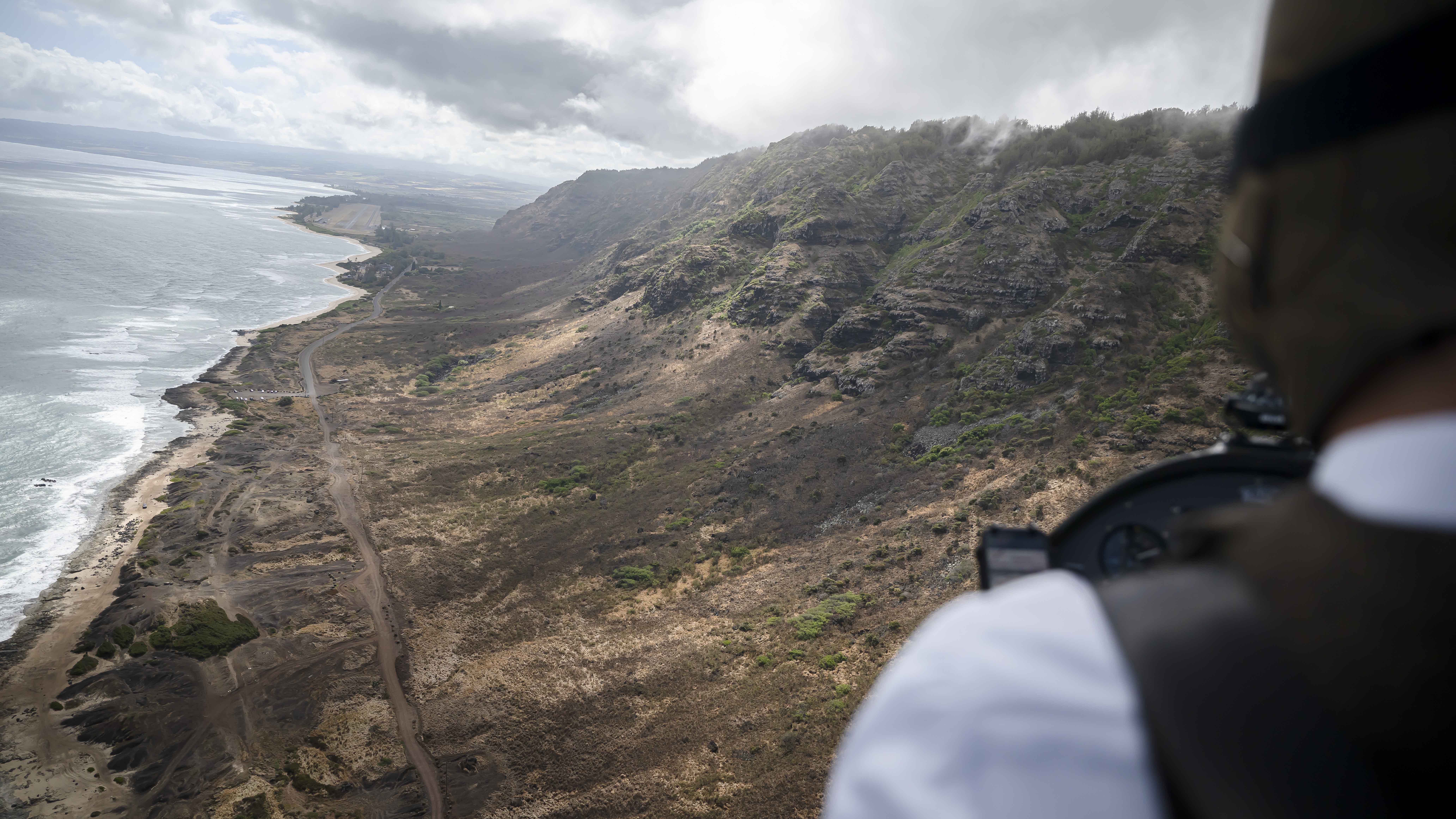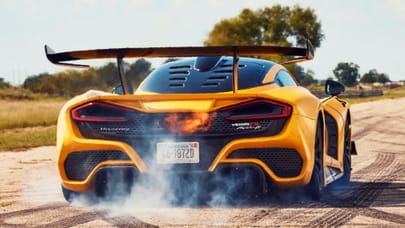
Aloha! Driving a Ford Mustang around Hawaii
We had some unfinished business with the Mustang and America, so we shipped off to Hawaii to sort it all out
“Farve hunner mile? Jeez, farve hunner mile wouldn’t git you out of Texas.” A pause, “Unless you was heading towards Louisiana.” Surely that depends on where in Texas you start from, I think, but decide not to voice. It would only add to the general air of confusion. He’s on holiday. You can guess where from.
I thought racking up over 500 miles on an island that measures only 44 by 30 was pretty good going, but Oahu, it ain’t like America. It’s an itty bitty little place, smaller than Houston. But it packs it in, and so have we: film sets, Mustang meets, surfing, volcanoes, daft shirts, a bloody gyrocopter, an autosolo. We came, we shaka’d, we brah’d and we left.
There is no element that ties these things together besides geography. But then this is a story about geography. And history. So let’s start there. You see back in 2014, when Top Gear magazine was a mere 263 issues old (21 in human years), we drove a Ford Mustang around America. Not across America, no. We visited every state. The thinking was this: the Mustang is 50 years old. The United States of America is made up of 50 states. So let’s visit every single one. We started top right, finished bottom left. It was a journey of epic numbers – 11,175 miles in 15 days, four different crews, 32 tanks of fuel. And more pertinently, sleep deprivation, hallucination, a cabin odour that can still trigger a gag reflex, and a quite profound admiration for America’s favourite sports car, the Mustang.
Photography: James Lipman
But even doing the lower-48-plus-Alaska doesn’t equal 50. The plan had been to put the Mustang on a boat to Hawaii, but Ford wanted to put the car, covered in its 49 state stickers, on display and we didn’t have enough time to get it there and back. For years it’s been unfinished business.
The trouble with our epic roadtrip was that we came away with an overall sense of America, but no deep knowledge of the individual states. This time I get to put that right. And the first thing I get a sense of is paperwork. A few days later someone describes Hawaii to me as “a first world country with third world bureaucracy”. The Mustang, shipped specially from Michigan, is trapped in customs. So that day I go and watch an autosolo at Aloha stadium, rather than taking part. There used to be a racetrack on Oahu, but it closed in 2006 so now the island’s motorsport enthusiasts are reduced to this, ragging around cones in a car park. It hasn’t dampened their enthusiasm. Nor their hope that one day their petitions will bear fruit. There are a lot of military airfields littered across Oahu that would double up brilliantly as racetracks.
I collect the car the next day. It’s the Mustang’s Mustang: a 5.0-litre GT, naturally aspirated V8 with a manual gearbox, painted Grabber Blue with a Bronze Pack. Rather than earning its stickers at each state line, as it had last time round, this time I slap them on immediately. I do this in a bid to make the Mustang blend in. This will turn out to be extremely misguided.
Now, I need to let you in on a secret. The plan was to have two Mustangs – this one, and our original. But it’s disappeared. Ford can’t find it. It was in the collection and now it’s gone, lost, maybe sold off, or loaned out to a dealership and now sitting forlornly in the corner of a yard somewhere in middle America. It would have been an interesting comparison because, quite frankly, not much has changed over the past nine years. Apparently Ford considered electrification, hybrid, and all the rest for the seventh generation before settling on exactly what it’d done before: shove in a Coyote V8, zhuzh up the rest a bit, dust its hands, nod and go ‘yep, that’s a Mustang’.
Yes, there have been changes. The engine breathes better so is up 30bhp to 480bhp, and the steering now has a faster rack (15.5:1 ratio rather than 16:1) and stiffer mounting points. But as you can guess from the familiar looks and proportions, it’s retained the steel chassis with McPherson strut front and multi-link rear suspension. This one also has the $4,995 [£3,950] Performance Pack (strut brace, Torsen LSD, wider wheels and tyres and bigger Brembo brakes) but hasn’t received the $1,750 [£1,400] MagneRide adaptive dampers.
Saddled up, I head north out of Honolulu, joining the hordes. For most Americans Hawaii is vacation land. They all stay in Honolulu, the big city, but journey out like a tide in the morning, back in the evening. Six main islands make up the Hawaiian chain and Oahu, although not the biggest physically, is easily the most populous and popular. The traffic crawls. Pearl Harbour slips by on my left. I’d had a plan – I wanted to finish this story with the Mustang parked up by the bows of the USS Missouri – the ship that the Japanese surrender in World War Two was signed on – but my visit here has coincided with the tragic wildfires on Maui and the navy has been called in to assist the rescue effort. Maui isn’t far away, the fires are personal to people here, there are fears the flames could strike here too.
The land rises as the Mustang growls north, across a central agricultural plain between the two spines of mountains that dominate the island. At Waialua you hit the North Shore. Surf central. The coastline all the way along the top is renowned for its giant waves that push down out of the North Pacific in winter and have made this place a global mecca for surfing.
I’m not heading for the beach, but a dilapidated sugar mill, now a hub for surfboard makers. Eric Arakawa has been shaping surfboards for nearly 50 years. Shaping, that’s the art, “the basics are the longer your board, the bigger the waves you can ride,” he tells me. “But the key is the profile of the edge, that dictates how it cuts into the face of the wave when you turn.” Surfboards are simple: they’re made of high density foam, with a wooden ‘stringer’ inserted from nose to tail to add strength and control flex. But dig deeper and you learn how they balance art and science. Initial design is done in CAD, the raw ‘blanks’ with the stringers inserted then machined to shape. Next comes the art: hand shaping to give each board the required characteristics and a perfect finish. A final fibreglass coat and fitting of fins doesn’t tell half the story. Everything is important, from the different woods used for the stringer, to the shape of the fins. “We custom build boards for people, taking into account their size and weight, their experience, the kind of waves they’ll be riding,” continues Eric. “And the typical surfer up here isn’t going to just have one board, they’ll have a bunch for different conditions.”
Top Gear
Newsletter
Thank you for subscribing to our newsletter. Look out for your regular round-up of news, reviews and offers in your inbox.
Get all the latest news, reviews and exclusives, direct to your inbox.
The Mustang needs to be wearing a board. I’ve bought my inflatable rack from the UK (last used to carry skis on an Audi R8) and on goes one of Arakawa’s light, elegant boards. I ask Sean, Eric’s son, whether the Mustang passes muster as a surf wagon. There’s a grimace. “Up here, if you want to look the part you need a Toyota Tacoma truck. A Mustang?” He sighs. “That’s what the tourists drive.” Ah. I kind of knew it was coming. Mustangs, mainly convertibles, are a dime a dozen on Oahu, driven by people who probably left a minivan at the airport when they flew out. We drive along the coast, the Mustang wearing the board’s fins like a set of horns. But Sean’s right, it sticks out like a... well, like a bright blue Mustang among the massed Tacomas of the surfing fraternity. It’s stunning up here though. Colourful buildings, the view between lush vegetation teases soft sand and swollen sea. It might not be peak surf season, but it’s lumpy out there.
Time to go somewhere the Mustang is sure to blend in... our very own Mustang meet – 6pm in downtown Honolulu and there’s not a parking space to be had at Magic Island, so we pull up in the unloading bay. No one cares, it’s a gorgeous evening and they’re all out exercising. The backdrop, across palm trees and Ala Moana beach to skyscrapers and sunset
skies, is entrancing, if clichéd. Honolulu uses exotic trees to distract from the concrete and traffic, there’s something Vegas-esque about it.
However, the Aloha Mustang and Shelby Club of Hawaii reckons ours is the first seventh-gen Mustang on the island. They flock round it. The interior is widely admired, especially the clear screens with the switchable displays and the new Drift Brake. This is Ford at its most gung-ho and creative. An electric handbrake with a physical action, a quick pull or press puts it on or off, you can pull further up to slow the car, or engage Drift mode, when a quick stab instantly locks the back wheels. Never went near it. Promise.
The group’s not fussed the Mustang hasn’t changed much, far more relieved it’s retained a V8. Even Terrence Iwamoto, rocking a Mustang shirt, but driving a Mach-E. I ask Lester Hirano, the owner of a sparkling ’86 Mustang, what he makes of the Mach-E. He makes sure Terrence is elsewhere. “Well, he’s club president, so we’ve had to let it in, but it’s not a Mustang, it shouldn’t wear that badge.” There are shudders later when Terrence tells the assembly about this new aftermarket boom box he might get that slots under the back of the Mach-E and makes it sound like a V8.
There’s a great cross section of cars here, from a 1966 original through to a 2021 GT500. I ask, because it has always intrigued me, if they see the Mustang as a muscle car. “It’s too small”, “it’s a sports car”, “a muscle car has to be a two-door version of a four-door sedan”. To European minds, this is a big, muscular car, but even in Hawaii, where people tend to drive smaller, mostly Japanese and Korean cars, the Mustang is seen as a sports car.
I finish by getting tips for good driving roads, and the next morning head down to the south corner for dawn around Koko crater. The Mustang does feel more together now – there’s less harshness, more maturity and control to the suspension, tauter steering. I suspect it would be more sophisticated with the MagneRide adaptive dampers, but on previous experience Mustangs tend not to fall apart at the limit. In fact they get better. But here is not the place to experiment, because 10 minutes before the sun gets up, the tourists arrive with their selfie sticks.
I retreat to take in the most startling road on the island. The H3 interstate is massively controversial. Finished in 1997 it runs across the island, up one of the most pristine valleys, before burrowing through the green-decked mountains. It was heavily opposed locally, not least due to its £1bn construction cost. Lifted mostly above the valley floor on viaducts, you drive among the treetops. The views are staggering, but you can tell it’s an imposition. Right now I’m heading to Kualoa Ranch. You’ve never heard of it, but I guarantee you’ve seen it. This is where Hollywood comes when it wants a tropical, mountainous, uninhabited island. Jurassic Park, Lost, King Kong – all (plus another 200 or so) filmed here. I take the Mustang off-road and it’s easily robust enough to cope. More rugged than your average sports car, yet pretty taut to operate. There’s a weight to all the controls, but hey, this is a Mustang, it shouldn’t be a dainty drive. There’s heft, but also precision. The V8 burbles around delightfully at low revs and the Mustang climbs up to Jumanji Ridge past Kong’s skull without once scraping or wheelspinning. Apart from when I mean to.
On the rare occasions I find room to unleash the V8, it bellows well. Quite the chest beater, but more than that the performance has a more penetrating top end, this is the first ‘basic’ Mustang I’ve driven that is genuinely quick, easily a match for its mass. But it’s not super responsive. It’s slow losing revs on the overrun, there’s inertia in the drivetrain.
You can see why Hollywood comes here. It’s aesthetic perfection, the broad meadowy vale flanked by towering, unscalable green rock walls. But you’re always viewing from the bottom. None of the roads, in fact few paths, really climb the mountains – they’re too steep, there’s no point. I’d have been happy to have left it at that, but then an opportunity arose...
It began as a plan to find somewhere I might be able to unleash the Mustang, but seeing as all airfields on Oahu remain military property, that was a no-no. But flying in a gyrocopter? OK, more like on a gyrocopter. Well, that was fine. I said yes because James Alaggio looked like someone I could trust, had an enviable flying CV and sounded like he had the physics dialled on how this mechanical daddy longlegs stays in the air.
And it was dazzling, the freest form of powered flight you can imagine. And, when it rained, the stingiest. But from a kilometre up you get a different perspective, you understand how the weather works here, how the mountains wring rain out of the clouds, leaving the east coast drenched and green, the west dry and browned. You see the beaches, the reefs, the shape of the ocean floor that dictates so much about how the waves break. And you realise that Hawaii, this series of dots in the Pacific, really has very little in common with the rest of the USA.
I reflect on this when I rumble back south later. The Mustang is a potent symbol of America – it’s why it was so popular when it arrived in Europe in 2016. People weren’t buying a car so much as a stars ’n’ stripes statement. But in Hawaii the Mustang is seen differently. It represents the separation between the mainland that uses the islands for play and the permanent population. There’s a them and us mentality, a sense the US has imposed itself on Hawaii since it became part of the union in 1959.
It’s also curious isn’t it, that when in Europe the Fiesta, Focus and Mondeo are either dead or dying, making way for crossovers, hybridity and electrification, in America the Mustang continues exactly as before. And it arrives in Europe next year – V8, 300g/km CO2 emissions and the rest. Just like the USA and Hawaii, the two strategies rub each other up the wrong way. The rumour is that this Mustang is a stopgap and Ford will bow to the inevitable and embrace hybrid or electric before the end of the decade.
I’m not even torn on this one. I know it’s a rational business decision and the Mustang will sell well to those who already love it, but rather than being the last to leave, I wish Ford had been the first to jump, to reimagine the Mustang for a new age. It might have gone down better on Oahu, if not with my chum from Texas.
Thanks to: @Nakedgyro, arakawasurfboards.com, Jarrod Silcox and OhanaMotorsportsFoundation.com, Alohamustang.org, kualoa.com, GoJump Hawaii, Dillingham Airfield, Anna Metcalfe and Savanna Gonzales at Hawaii.gov, the team at Pearl Harbour and the USS Missouri
Trending this week
- Car Review
Renault Clio




